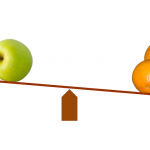
We are pleased to present a guest post written by Dr. Constantinos Pantidos. In this article, Dr. Pantidos discusses why in a time of unprecedented change, reaching for greater efficiency when there is a much more effective option available could be disastrous.

Business (like life) is arguably at its best when it is earmarked by creativity and/or innovation. In order to perpetuate this success, we constantly seek examples to learn from.

I am often intimidated by the challenge of translating complicated subject matter into very few words and simplifying it to make it more understandable. Therefore, I have chosen a “recipe” metaphor for this article because I believe there is no single component to innovation. With the right ingredients and assembly of those ingredients (allowed to cook together if you will), the outcome is worth the effort.

Just to be clear, my objective in this article is not to do a book review or a historical reenactment of the life and accomplishments of da Vinci but rather to repeat some lessons identified by the author that can be drawn upon in the context of creativity and/or innovation everyday challenges in the world of business.

What could be the practical value (to the world of business) of an overview of the neuroscience of creativity/innovation? If nothing else – I hope to illustrate what a holistic phenomenon this is and encourage initiatives that could enhance cognition, creativity and innovation.

“We use four metaphors a minute, one for every 25 words or so.” – Katy Waldman. Obviously, something being used so often is important – likely in more than one way and it seems for quite some while: The word originates from the Greek word metaphorá, meaning to transfer, to carry over.

Now I’m not suggesting that this is some new idea I came up with. I don’t see this as the start of a new conversation. I am jumping into an existing dialogue with the hope of providing context, structure and experience to expand the dialogue.







